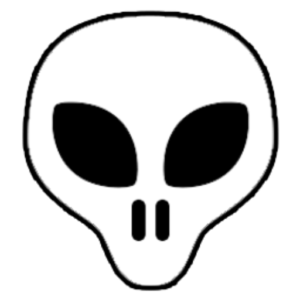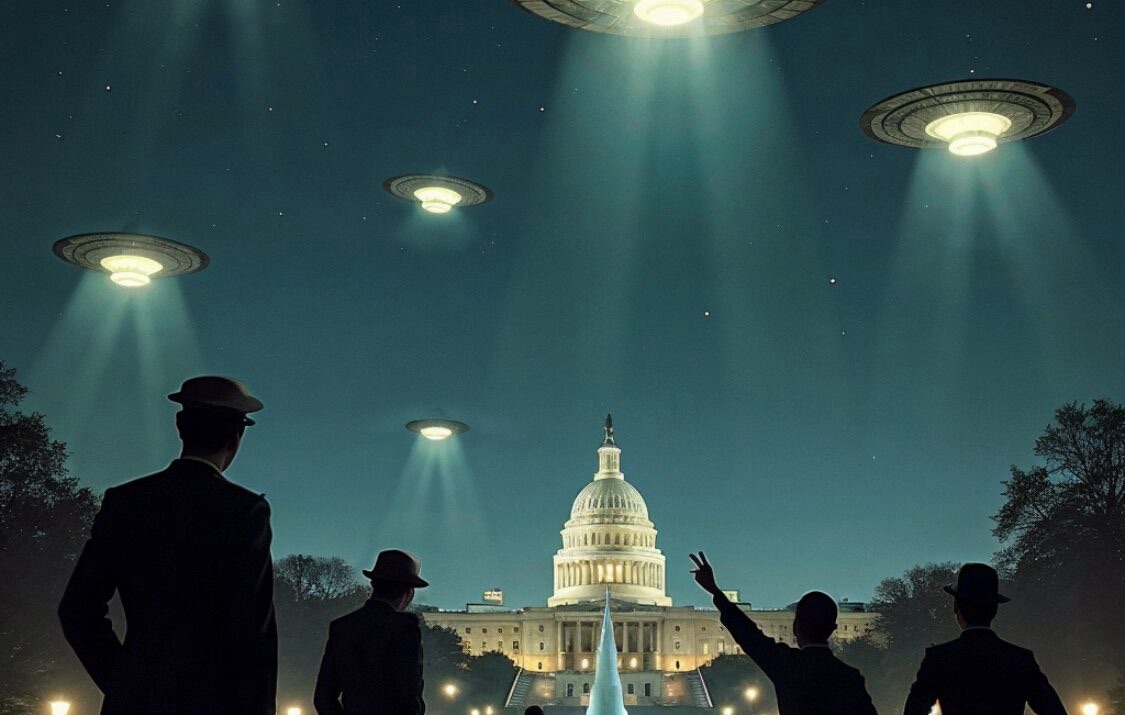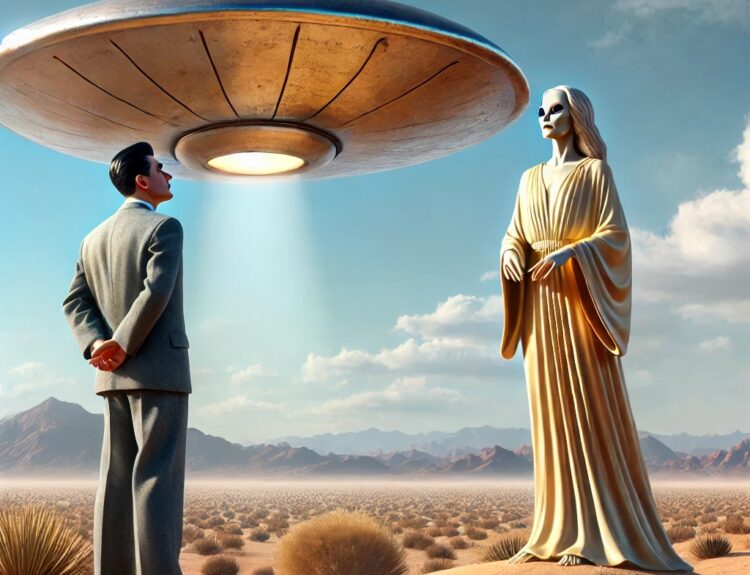The summer of 1952 is remembered as a period of intense UFO activity, particularly in the skies over Washington, D.C. Known as the “1952 Washington, D.C. UFO Incident” or the “Washington Flap,” these sightings stand out as some of the most credible and well-documented encounters in UFO history. Multiple unidentified flying objects were observed over the nation’s capital, both visually and on radar, causing widespread alarm and intense media coverage. The U.S. Air Force was compelled to respond publicly, which was a rare occurrence, highlighting the seriousness with which these sightings were treated.
INCIDENT SUMMARY
The Washington, D.C. UFO incident unfolded over two consecutive weekends, from July 19-20 to July 26-27, 1952. During these nights, numerous unidentified objects were detected by radar and seen by both civilian and military personnel. The objects exhibited flight characteristics far beyond the capabilities of any known aircraft of the time, including sudden changes in direction, hovering, and extreme acceleration. The Air Force conducted an investigation, but their explanations did little to quell public curiosity and concern. The event significantly contributed to the growing interest in UFOs and remains a cornerstone case in UFO research.
DETAILS
- LOCATION: Washington, D.C., including critical areas such as the Pentagon, Washington National Airport (now Ronald Reagan Washington National Airport), and Andrews Air Force Base (now Joint Base Andrews).
- DATE: July 19-20 and July 26-27, 1952. Throughout the summer.
- TIME: Typically, between 11:30 PM and 2:30 AM.
- EVENT DURATION: Various
- NUMBER OF OBJECTS: Reports vary, but radar operators tracked between 7 to 12 objects at different times.
- OBJECT(S) SHAPE: Witnesses and radar operators described the objects as disc-shaped or “saucer-like,” consistent with the classic “flying saucer” imagery that was prevalent during that era. Some reports also indicated that the objects had a glowing or luminous quality, with varying colors observed, such as orange, red, and white.
- DESCRIPTION OF THE OBJECT(S): The objects were capable of extraordinary maneuvers that defied the known limits of contemporary aviation technology. These included rapid acceleration to high speeds, abrupt changes in direction, hovering in place, and the ability to disappear from radar and reappear in a different location. Some witnesses reported that the objects emitted bright lights that pulsated or changed color, adding to the mystery of their origin and purpose.
- ALIEN(S) ENCOUNTERED: None
- DESCRIPTION OF ALIEN(S): None
- CE CLASSIFICATION: CE1 (Close Encounter of the First Kind)
- Sightings of one or more unidentified flying objects without any physical interaction with the environment or the observers.
- These encounters involved both visual sightings by credible witnesses and confirmation by multiple radar stations, making them significant within the UFO research community.
WITNESSES
- HARRY BARNES: Senior air traffic controller at Washington National Airport. Barnes was on duty when the first objects appeared on radar on the night of July 19, 1952. He described the radar contacts as moving erratically, with sudden changes in speed and direction that were impossible for conventional aircraft. Barnes communicated with nearby radar stations, which also confirmed the presence of these unidentified objects. His professional experience and detailed account lend significant credibility to the incident.
- MAJOR CHARLES SWEENEY: U.S. Air Force pilot scrambled from Andrews Air Force Base. Sweeney was ordered to intercept the objects detected on radar on July 26, 1952. Despite radar confirmation of multiple targets, Sweeney was unable to visually locate the objects. This led to speculation about the objects’ ability to evade detection, possibly through advanced technology or cloaking capabilities.
- EDWARD NUGENT: Radar operator at Washington National Airport. Nugent was the first to detect the unidentified objects on radar on the night of July 19. His observations were crucial in alerting the air traffic control tower and coordinating with other radar stations. Nugent described the objects as moving at speeds and angles that were unprecedented, further supporting the idea that these were not conventional aircraft.
- HOWARD COCKLIN: Air traffic controller at Washington National Airport. Cocklin visually observed strange lights in the sky that corresponded with the radar blips reported by Nugent and others. His visual confirmation provided additional evidence that the objects were real and not just radar anomalies. Cocklin described the lights as “bright, orange-red,” and “moving erratically,” consistent with the descriptions given by other witnesses.
- CAPTAIN EDWARD RUPPELT: Head of Project Blue Book at the time. Ruppelt was responsible for the official Air Force investigation into the sightings. Although not a direct witness, his involvement in analyzing the events and interviewing witnesses makes his perspective crucial. Ruppelt later described the Washington, D.C. incident as one of the most baffling cases in Project Blue Book’s history.
CONCLUSION
The 1952 Washington, D.C. UFO incident remains a landmark case in the study of unidentified aerial phenomena. Despite extensive investigations by the U.S. Air Force, including the involvement of Project Blue Book, no conclusive explanation was provided for the events of those summer nights. The official explanation—temperature inversions—was met with skepticism by many, including some of the witnesses and researchers involved. The incident significantly heightened public interest in UFOs and led to increased scrutiny of the Air Force’s handling of such cases.
The Washington Flap also influenced the development of UFO research and investigation methodologies. It underscored the need for a systematic approach to analyzing UFO sightings, leading to more rigorous documentation and classification systems. The event continues to be cited by UFO researchers as one of the most compelling pieces of evidence for the existence of unexplained aerial phenomena.








